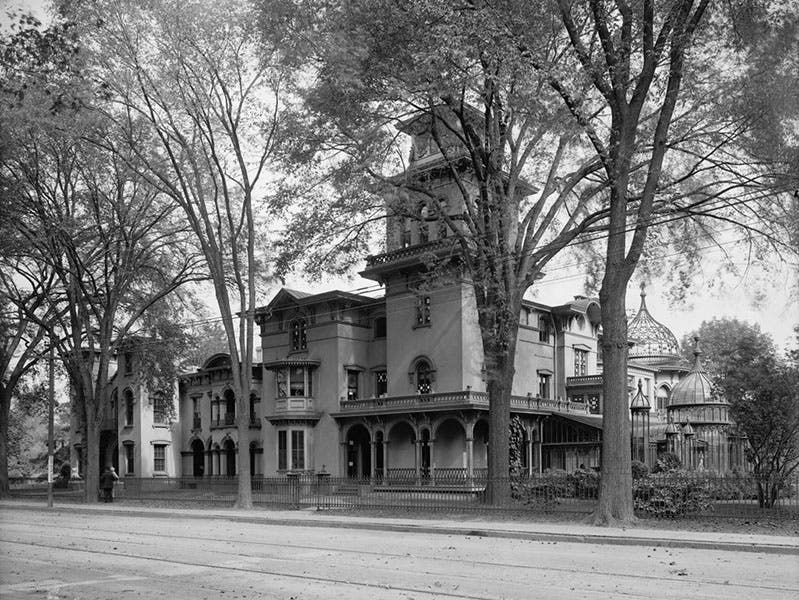Scientist of the Day - Samuel Colt
Samuel Colt, an American inventor and manufacturer, was born July 19, 1814. Colt began making firearms in the 1840s, setting up the Patent Fire-Arms Manufacturing Company in Paterson, New Jersey. His principal innovation was the revolving cylinder to allow multiple firings of a gun. He got the idea back in 1831, while on a ship, and he carved a six-chambered cylinder and a hammer out of wood to give physicality to his idea, which amazingly, still survives (fourth image). Colt’s revolvers did not find much acceptance until 1847, when his Paterson handgun was bought in large lots by the Texas Rangers and used in the war with Mexico. After that, Colt revolvers went into widespread use, and Colt became a very wealthy man.
Colt produced his firearms using interchangeable parts. He was not the first to do so, but he was one of the first to use them efficiently in what was essentially an assembly line. One of the Paterson revolvers made for the Texas Rangers is seen above, as it was being readied for auction (first image).
Colt was also a shrewd businessmen, making gifts of beautifully engraved revolvers to people who might help him down the line. For example, knowing that his patents would be up for renewal in the mid-1850s, he presented an 1851 Navy Colt to Franklin Pearce in 1852, before Pearce was successful in the 1852 Presidential election. That gun in its case still survives, and was sold at auction in 2009 for over $200,000 (third image). It is suspected that Colt presented a similar gift to Pearce's rival, General Winfield Scott, just in case the election went the other way, although that gun has never surfaced, if indeed it ever existed.
Colt eventually moved his operations to Hartford, Conn. Near the plant he built a house named Armsmear (fifth image). The original plant burned and had to be reconstructed, but the house still stands. The 105 acre estate that held the house and manufacturing plant was bequeathed to the city of Hartford by Elizabeth Jarvis Colt, Colt’s widow, upon her death in 1905. It is now Colt Park.
As another part of her will, Elizabeth gave Colt's complete collection of firearms and his art collection to the Wadsworth Atheneum in Hartford, where they form part of the Elizabeth Hart Jarvis Colt Collection. Colt’s watercolor-on-ivory portrait (second image), is part of that collection, as is the wooden cylinder Colt carved in 1831 (fourth image), and hundreds of Colt revolvers.
A statue of Samuel Colt stands today in Colt Park (sixth image).
Dr. William B. Ashworth, Jr., Consultant for the History of Science, Linda Hall Library and Associate Professor, Department of History, University of Missouri-Kansas City. Comments or corrections are welcome; please direct to ashworthw@umkc.edu.











